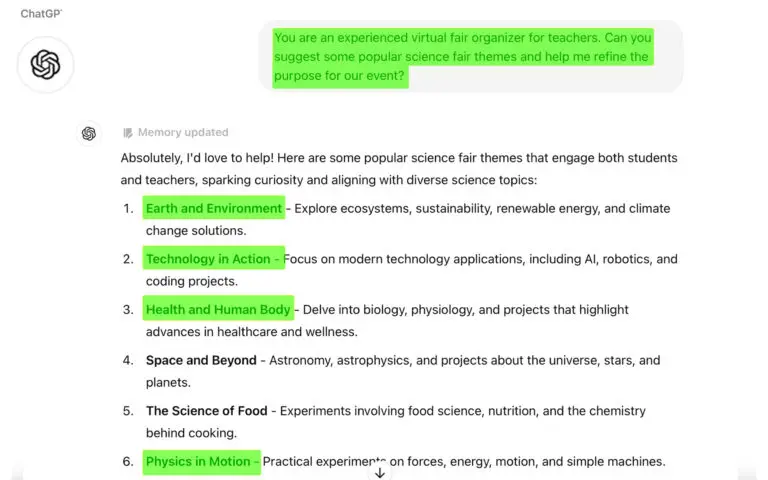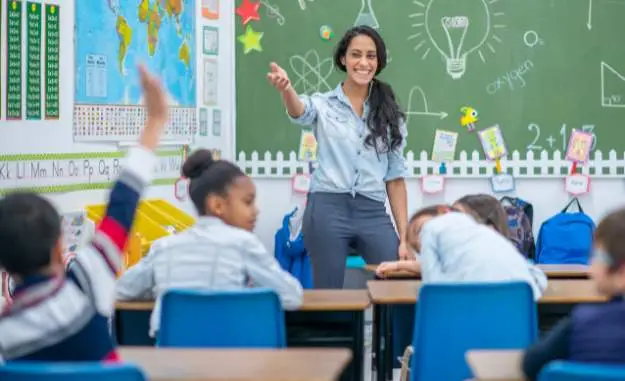Imagine stepping into a classroom where each student gets a learning experience tailored just for them, thanks to the magic of AI. Sounds like a dream, right? Well, it’s becoming a reality with Generative Pre-trained Transformers, or GPTs for short. These AI-powered GPTs are transforming the way we teach, making lessons more engaging and personalized than ever before. But, using them ethically means thinking about the big picture.
In this article, we’re discussing every aspect you need to know about the exciting world of “GPTs for teaching.” We’ll uncover what these GPTs do, how they save teachers time, and tackle the challenging ethical questions they bring up.
Ready to see how GPTs are changing the game for teachers and students alike? Let’s get started!
What are GPTs and how can they transform teaching?
Generative Pre-trained Transformers (GPTs) are a type of artificial intelligence designed to understand, generate, and engage with human language in a way that’s remarkably sophisticated. For teachers, this means having access to an AI assistant capable of creating interactive learning materials, offering personalized feedback to students, and even generating creative prompts for discussion or writing assignments. The transformative potential of GPTs lies in their ability to provide support that is tailored to each student’s learning pace, interests, and needs.
How are teachers using GPTs in classrooms?
Across the globe, forward-thinking teachers are incorporating GPTs into their teaching strategies. From creating customized reading materials that align with each student’s reading level to generating real-time questions and answers for interactive class discussions, the applications are vast and varied. Teachers are using GPTs to design engaging lesson plans, automate the grading of short answer questions, and provide students with a more interactive learning experience.
What are the ethical considerations when implementing GPTs in education?
While the benefits of GPTs in education are clear, it’s crucial to approach their implementation with ethical considerations in mind. Issues such as data privacy, the accuracy of generated content, and the potential for AI to influence students’ critical thinking skills are at the forefront. Teachers must ensure that the use of GPTs does not replace the human element in education but rather complements it, fostering an environment where students are encouraged to question, critique, and engage critically with the information presented by AI.
How can teachers start using GPTs in their teaching methods?
Yes. For teachers eager to explore the potential of GPTs, starting can be as simple as integrating AI-generated content into lesson plans or using AI as a tool for generating creative writing prompts. However, it’s essential to vet the content for accuracy and appropriateness. Additionally, educators should consider professional development opportunities to understand the capabilities and limitations of GPTs fully. Engaging with a community of educators who are also exploring these tools can provide valuable insights and support.
Best GPTs in Education For Teachers
1. Lesson Planning GPT for Teachers
Planning lessons can be time-consuming, but with the Lesson Planning ChatGPT Bot, teachers can create comprehensive, engaging lesson plans tailored to their curriculum needs. This GPT bot offers personalized suggestions, activities, and resources, ensuring that each lesson is both informative and captivating. It even allows you to export your finalized lesson plan as a .PDF!
2. Text Improver GPT
The Text Improver GPT stands out by assisting teachers in refining their educational materials. Whether it’s enhancing the clarity of instructions or making study guides more engaging, this tool ensures that all text materials are of the highest quality, thereby improving student comprehension and retention.
3. Paper Feedback GPT
Grading papers is an integral part of teaching, yet it demands a great deal of time and effort. The Paper Feedback GPT automates this process by providing detailed, constructive feedback on students’ assignments, enabling teachers to focus more on one-on-one interactions with their students. It’s also a great GPT for students to receive constructive feedback on their essays.
4. Email Reply Bot GPT for Teachers
Communication is key in education, and the Email Reply Bot is here to ensure that no email from students, parents, or colleagues goes unanswered. This GPT offers timely, professional, and personalized responses, making communication efficient and effective for teachers.
5. Rubric Creator GPT
Creating rubrics is essential for assessing student work, and the Rubric Creator GPT simplifies this process. By inputting the assignment criteria, teachers can quickly generate detailed rubrics that offer clear expectations and fair evaluations for students.
6. Writing Assistant GPT Pro
The Writing Assistant GPT aids in the development of writing skills by offering suggestions, corrections, and prompts. It’s an invaluable tool for both teachers and students, enhancing creativity and ensuring clarity in every written piece.
7. Spelling Checker GPT
Spelling mistakes can detract from the quality of written work. The Spelling Checker GPT is designed to catch and correct these errors in real-time, fostering a learning environment where students can confidently improve their spelling skills.
8. Grammar Checker GPT
Grammar is the foundation of effective communication. The Grammar Checker GPT helps teachers and students alike by identifying and correcting grammatical errors, thereby improving the overall quality of written materials. With it’s speedy grammar corrections it easily makes our list of the best GPTs in education.
9. Image Creator for Presentations
Visual aids significantly enhance learning. The Image Creator GPT allows teachers to generate custom images that align with their lesson content, making classes more interactive and engaging for visual learners. Easily use Image Creator GPT to generate compelling images for your next educational presentation.
Get Instant Access to All the GPTs Mentioned in this Article
Head over to aiforteachers.ai to receive instant access to every GPT model discussed in this article. Dive deep into the capabilities, applications, and revolutionary impacts of each education GPT version.
Whether you’re a teacher, tech enthusiast, business professional or student looking to leverage AI in education, these advanced GPTs serve as your gateway to educational success.
Conclusion on Teaching with GPTs
The integration of GPTs into the educational sector offers a bright future for both teachers and students. With these AI-driven GPTs, educators can enhance their teaching methods, engage students more effectively, and manage their time more efficiently.
AI For Teachers is committed to bringing these transformative technologies to the forefront of education, ensuring that every teacher has access to the resources they need to succeed in the digital age.
To learn more download our education GPTs or visit our blog to stay on top of AI in education.



